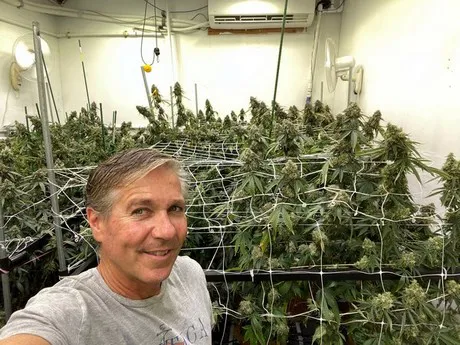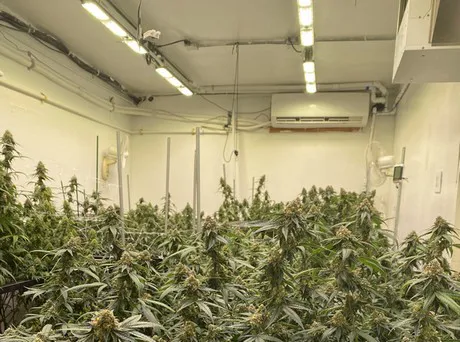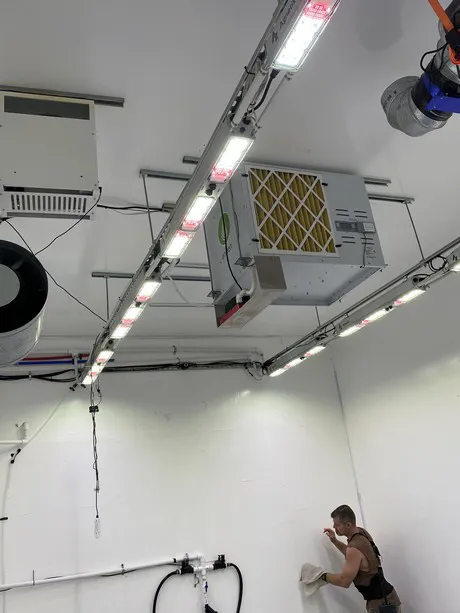A crucial aspect of every large-scale cannabis cultivation operation is lighting. The most commonly adopted lighting solution has been HPS lamps. When cannabis was still unregulated, growers relied mostly on this type of lighting because the fixture was not as expensive, and because some information on how to use it could be found. LED lights for growing were just showing up for the first time, and the technology was not mature enough to convince growers to switch from HPS to LEDs.

However, as time passed and the cannabis industry finally became regulated, LED technology has become increasingly sophisticated, thus making it an even better solution than HPS, at times. Yet, because of the difficulties during the earlier times, some growers might still be reluctant to adopt LEDs. “I think that those growers that are still not fully convinced about the superior quality of LEDs are those that tried them in the past and didn’t get the same results as they got with HPS,” David Arthur with Agnetix says. “Thing is, growers most likely just changed their fixture without adjusting their growing methodology to the new light. There are so many differences and variables to take into consideration that are not related to lighting only.”
Growing environment: LED vs HPS
“For instance, HPS produce a lot of heat, and therefore you need to keep the room cool constantly. Basically, you are fighting with the heat. But if you look at LEDs, they don’t produce as much heat, and therefore you wouldn’t need much of a cooling down. At the same time, LEDs are brighter than HPS while using less electricity: therefore, even though the upfront investment might be bigger initially, a grower would save a lot of expenses thanks to the intrinsic qualities of LED lights,” David explains.

Agnetix is one of those lighting companies that is constantly pushing LED technology forward, in order to provide growers with better light quality and intensity, while at the same time allowing them to be more environmentally sustainable. “Dr. Ihor Lys, the man who created Agnetix, invented a hot water loop for LED lights, so that there would be no heat waste dispersed into the grow room,” David continues. “It’s just like a car, which has a radiator, a pump, and a heat source: Dr. Lys basically created a radiator system for LEDs.” But this is just one of the many innovations that Agnetix has included in their fixtures. “We created a light that is more powerful than a double ended HPS and uses only half the HVAC required compared to an HPS.”
Smart lighting
These LED solutions are not only cheaper to operate, but are also dimmable and with 100% spectrum, to provide plants with the optimal light intensity and quality throughout the grow. “Another important characteristic of LEDs is that they are full spectrum, and there’s no specific infrared coming from LEDs. On the other hand, HPS pumps out infrared, which ultimately makes plants transpire, and thus they become wet. Especially when lights are out, humidity can become a very serious issue with HPS lights, and as a consequence, a grower might have a pathogen outbreak, putting in serious danger the successfulness of the crop.”

One of the most interesting innovations of Agnetix is the Raspberry Pi included in every light. “Basically, each light is able to gather all the info in a grow room,” David points out. “They are smart lights that gather data on humidity, temperature, leaf temperature, and it also calculates the VPD. All the data is shown on the computer screen, and it tells growers exactly what is going on in the grow room. By controlling each of these variables, you can repeat processes, allowing you to test things you want to try out. The next generation of lights will have even more features implemented, and they will be fully smart integrated systems.”
Such highly advanced LED solutions are very much needed now that the state of California is going to pass a regulation that requires growers to use only LED lights. “I think that at the end of the day, the change won’t be abrupt,” David says. “It will be more of a learning process: it is surely going to bring about debates and discussions, and ultimately it will be slowly integrated. Then, I think that also other states will follow suit.”
For more information:
Agnetix
agnetix.com
